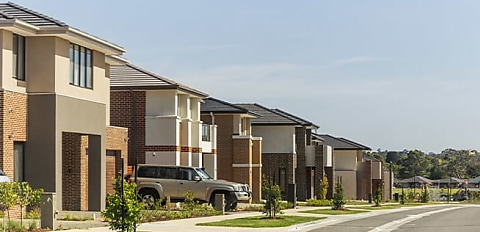According to the latest lending indicators data released by the Australian Bureau of Statistics (ABS), the value of new owner-occupier loan commitments for housing rose 5.6 per cent to $17.23 billion in October 2023, up 1.4 per cent on the previous year.
When looking solely at new owner-occupier dwelling commitments (i.e. excluding construction loans), the value of mortgages grew by $300 million, to $15.97 billion.
The number of new owner-occupier dwelling commitments in October increased to its highest volume in a year, according to the ABS data.
The data – released on Monday (4 December) – found that there were 26,351 new home loans written in October 2023 (in seasonally adjusted terms), 2.8 per cent more than the previous month and the highest number since October 2022 (when around 26,500 new owner-occupier dwelling loans were written).
ABS’ head of finance statistics Mish Tan said: “The growth in number and value of new owner-occupier loan commitments in trend terms has been relatively strong since February 2023, reflecting rising prices and demand for housing.
“In October, average loan sizes for first home buyers grew 0.3 per cent from $506,000 to $507,000, while average loan sizes across all owner-occupier loans grew 2.1 per cent from $554,000 to $564,000.”
By state, the value of new loan commitments for owner-occupier housing rose the most in NSW, at $5.4 billion, followed by Victoria ($4.8 billion), Queensland ($3.3 billion), and Western Australia ($1.8 billion).
The value of new loan commitments by investors also increased across October, up 5 per cent to $9.5 billion.
Despite the uptick in lending for both investors and owner-occupiers, Housing Industry Association (HIA) chief economist Tim Reardon flagged that lending for construction and the purchase of new homes was still “22.4 per cent lower than at the same time the previous year and at their lowest level since the GFC”.
Mr Reardon added that the data showed there was no need for continued rate rises, stating: “There is no justification for further rate increases. Leading indicators of activity all show that the rise in the cash rate will cause activity to slow in 2024.
“The RBA (Reserve Bank of Australia) needs to pause on any further rate increases and wait for the full impact of their actions to date to flow through to the wider economy.
“Not only are rising rates making it harder to address the acute shortage of housing stock, but the loss of skilled trades from the building industry will also make a recovery in home building increasingly slow.”
Similarly, the Commonwealth Bank of Australia (CBA) economist Harry Ottley stated that the RBA would be cautiously looking at the lending data ahead of its looming rate decision for December today (5 December).
He noted: “The RBA will be alert to the current upswing in the flow of credit as it is an indicator of current financial conditions.
“Indeed, the latest board meeting minutes contained the statement: housing prices were continuing to rise and loan approvals had increased over prior months, both of which might indicate that financial conditions are not especially restrictive.
“Even so, the RBA’s main focus remains on inflation and so data on the flow of credit, while informative, will not form a key part of their reaction function in coming meetings.”
As new mortgage activity continues to rise, the level of refinance activity continued to fall. The number of refinanced owner-occupier loan commitments between lenders, down 12.4 per cent in October to 20,518, continued the downward trend from the record refinancing high of 28,150 in July 2023.
[Related: Refinance activity breaks records, new mortgage lending rises]

